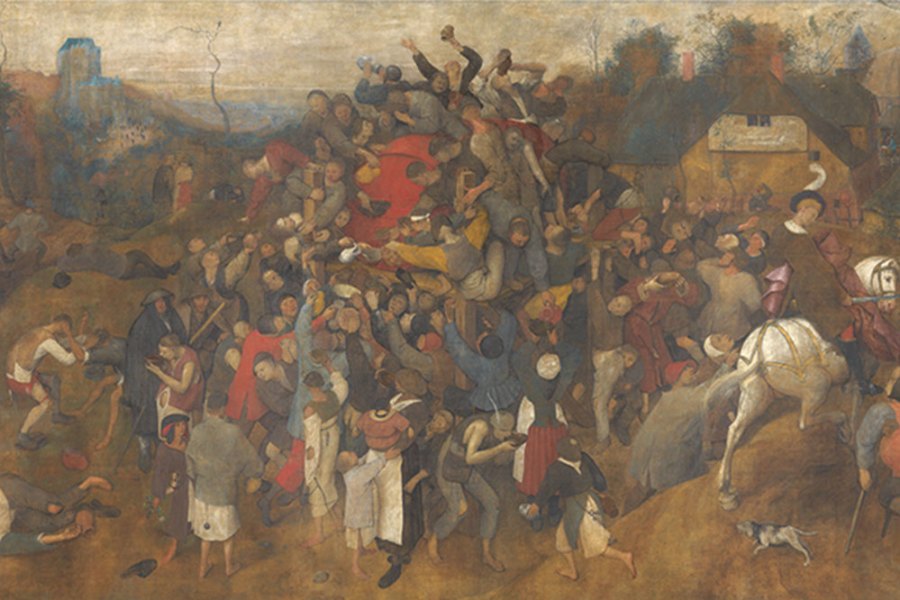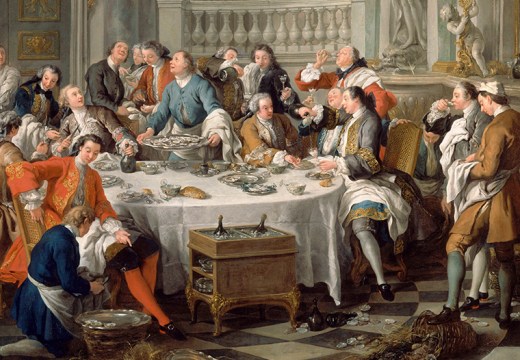From the December 2022 issue of Apollo. Preview and subscribe here.
At this time of year, we loosen our boundaries, throw out good behaviours and seemingly set out to destroy reliable red wines such as Merlot and Grenache by adding sugar and then warming them up in the name of Yuletide festivities. Mulled wine – the seasonal saccharine hooch of cinnamon, citrus and even raisins – may be the fuel of contemporary Christmas celebrations, yet its presence in bacchanalian gatherings has existed since antiquity.
The drink, an assemblage of spice and fruit, has long been an accompaniment to cultural celebration and ritual. ‘Wine can be a great addition to human society,’ the philosopher and wine critic Roger Scruton argued, but we must ‘pay Bacchus his dues’ by connecting it to culture and knowledge.
Spiced wines were important libations in Ancient Greece, believed to be restorative and even beneficial to health. In Laws, Plato restricts wine for anybody under 18, but makes it an essential remedy for the elderly. Hippocrates, the great father of medicine, incorporated wine into several of his cures. He decanted much oenological wisdom, explaining that since women have a wet and cold nature, they should only drink undiluted, fortified wine. A medieval spiced wine, hippocras, probably derived its name from him; a hippocras was also a cone-shaped bag for straining wine, used by apothecaries in their practice. His most important follower in Ancient Rome, Galen, took this advice further to warn those with a hot nature to avoid red wine altogether, as it just produces more heat and dryness in their being.
One of the earliest known cookery books – De Re Coquinaria, compiled in fifth-century Rome but attributed to the first-century epicurean Apicius – includes recipes for both spiced wine (conditum paradoxum) and wine with honey and pepper (conditum melizomum viatorum). The latter was deemed essential for travellers embarking on long journeys, as the spicy mix would preserve the wine and was safer to drink than water.
During Saturnalia, the holiday honouring Saturn and forces of agricultural abundance (17–23 December), all members of Roman households wore the pileus, a conical cap normally worn by freed slaves, as a symbol of the disruption of social order. To commemorate the winter solstice, marking the shortest day of the year and the annual rebirth of the sun, they drank the spicy, sugary conditum paradoxum. The bacchanalian intoxication sought out during the festival had a purpose beyond temporarily transgressing societal rules. It assisted with experiencing a sense of the divine; ‘the freeing of souls into immortality’, according to the philosopher Porphyry. Eventually, in the fourth century, the pagan festival began to dovetail with the advent of Christianity and Christmas Day. Although many customs swapped from pagan to Christian (Saturn became Father Christmas; the wax figures traditionally offered became Christmas presents), spiced wine continued to mull along. By the Middle Ages, it was entrenched in European seasonal festivities.
Perhaps there is no more striking compendium of transgressions than Pieter Bruegel the Elder’s paintings of peasant feasts from the 16th century. His scenes of celebration and inebriation are also important markers of rituals of drinking throughout the year. In The Wine of Saint Martin’s Day (1566–67) the first wine of the season becomes an orgy of drinking. In The Numbering at Bethlehem (1566) the biblical census performed in Judea is depicted against the backdrop of the Spanish occupation of the southern Netherlands, and figures are seen at an inn. Perhaps they are drinking spiced wine, very possibly prepared as instructed in the oldest printed cookbook in Dutch, Een notabel boecxken van cokeryen (‘A remarkable booklet of cookery’; 1514) by Thomas van der Noot.
Cultural celebrations are intended to express abundance and forge social bonds; by its very longevity, spiced wine has hung on to play its part in this. Spiced wine’s presence throughout seasonal rituals means it does have a noble place in the history of viticulture. Perhaps we should not let the unavoidable, excessive glut at a very specific time of the year (and the resultant hangover) put us off reflecting on this history. Or, in the words of Scruton, ‘you should drink what you like, in the quantities that you like. It may hasten your death, but this small cost will be offset by the benefits to everyone around you.’
From the December 2022 issue of Apollo. Preview and subscribe here.
Unlimited access from just $16 every 3 months
Subscribe to get unlimited and exclusive access to the top art stories, interviews and exhibition reviews.














![Masterpiece [Re]discovery 2022. Photo: Ben Fisher Photography, courtesy of Masterpiece London](http://www.apollo-magazine.com/wp-content/uploads/2022/07/MPL2022_4263.jpg)
It’s time for the government of London to return to its rightful home